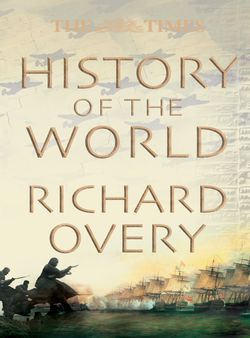Читать книгу The Times History of the World - Richard Overy - Страница 43
AD 235 TO 565 FROM ROME TO BYZANTIUM
ОглавлениеThe 4th century AD saw Roman emperors still ruling an empire that stretched from Spain to Syria. In the 5th century the two halves of the empire experienced different fortunes. Roman administration in the west dissolved in the face of increasing barbarian settlement, but in the east Byzantine civilization, combining Greek and Roman practices and culture, grew and flourished.
The empire emerged from the storms of the 3rd century intact but not unchanged. Diocletian and his successors owed their position to the army, not the Senate, and the military now provided most of the provincial governors. Rome itself ceased to be the centre of empire, as the emperors based themselves in cities nearer the frontiers: Mediolanum (Milan) in Italy; and, after AD 330, Constantinople in the east. The emperors were surrounded by large courts, increasingly turning to eunuchs as their closest advisors. To maintain the army, the taxation system was reformed and military service became a hereditary obligation. But as the senators in Italy and other rich landowners were increasingly excluded from power, so they became less inclined to support the emperor, a development which was to have a profound effect on the western half of the empire.
THE RISE OF CHRISTIANITY
But the greatest change to the empire was religious. In 312 Constantine defeated his rival Maxentius outside Rome, and he came to attribute his victory to the support of the Christian god. In his reign and that of his son Constantius II the churches received many favours from the emperor, and Christianity began to establish itself as the dominant religion of the empire. The last pagan emperor, Julian, died in AD 363 on campaign against the Persians before he had the opportunity to reverse the trend. Bishops such as St Ambrose in Milan (374–97) became increasingly powerful figures in the empire.
Barbarian incursions continued to erode central control of the empire. The arrival of the Huns in eastern Europe in 376 drove many Goths across the Danube, forcing them into Roman territory. Having in 378 defeated the Romans at Adrianople, in 405 they invaded Italy. In the winter of 406 German tribes then crossed the frozen river Rhine in unstoppable masses. The situation deteriorated throughout the century. The Vandals marched through Gaul and Spain before crossing to Africa where they captured Carthage, the chief city, in 439 and set up their own kingdom.
Where in the 4th century the Roman army had made use of barbarian officers, now the western emperors had little choice but to make grants of land for the invaders to settle on and to employ them in the army. With landowners unwilling to allow their tenants to fight, what had been a Roman citizen army became a barbarian mercenary one. Since the frontiers were no longer preventing barbarians from entering the western empire, and since the army was itself largely barbarian, the role of the emperor in the west was effectively redundant.
In 476 the magister militum (the chief military officer of the western empire) Odoacer, a German, deposed the emperor Romulus Augustulus, and did not replace him. With the eastern emperor making no attempt to resist this, the western empire ceased to exist. In 490 the Ostrogoths took control of Italy, and by 507 the Franks had established an extensive kingdom in Gaul (see p. 94). Yet Roman institutions survived: the Roman Senate continued to sit, and Latin remained the language of government.
THE RECONQUESTS OF JUSTINIAN
The eastern part of the empire possessed greater resources than the west, and eastern emperors could use their wealth to persuade would-be invaders to move away westwards. Although Roman culture continued to flourish in the eastern part of the empire, there were growing cultural differences between east and west: when Justinian launched his attempt to reconquer the former western empire, he was trying to impose a Greek-speaking administration on Latinspeaking territories.
Justinian’s reign was a mixture of triumph and disaster. In Constantinople it saw the building of the great church of St Sophia (532–63) as well as a devastating plague in 542. His general Belisarius took Africa from the Vandals in 533–4 while in 554, after a campaign lasting 20 years, Ostrogothic rule in Italy was ended. But Justinian’s successes in Italy were short-lived: the Lombard invasion of 568 left only Ravenna in Byzantine hands. Meanwhile in the east there was war with Persia (540–62): Antioch was sacked in 540 and peace was eventually bought only at great financial cost. Justinian’s wars left Byzantium seriously weakened. The dream of a reunited empire died with him.
